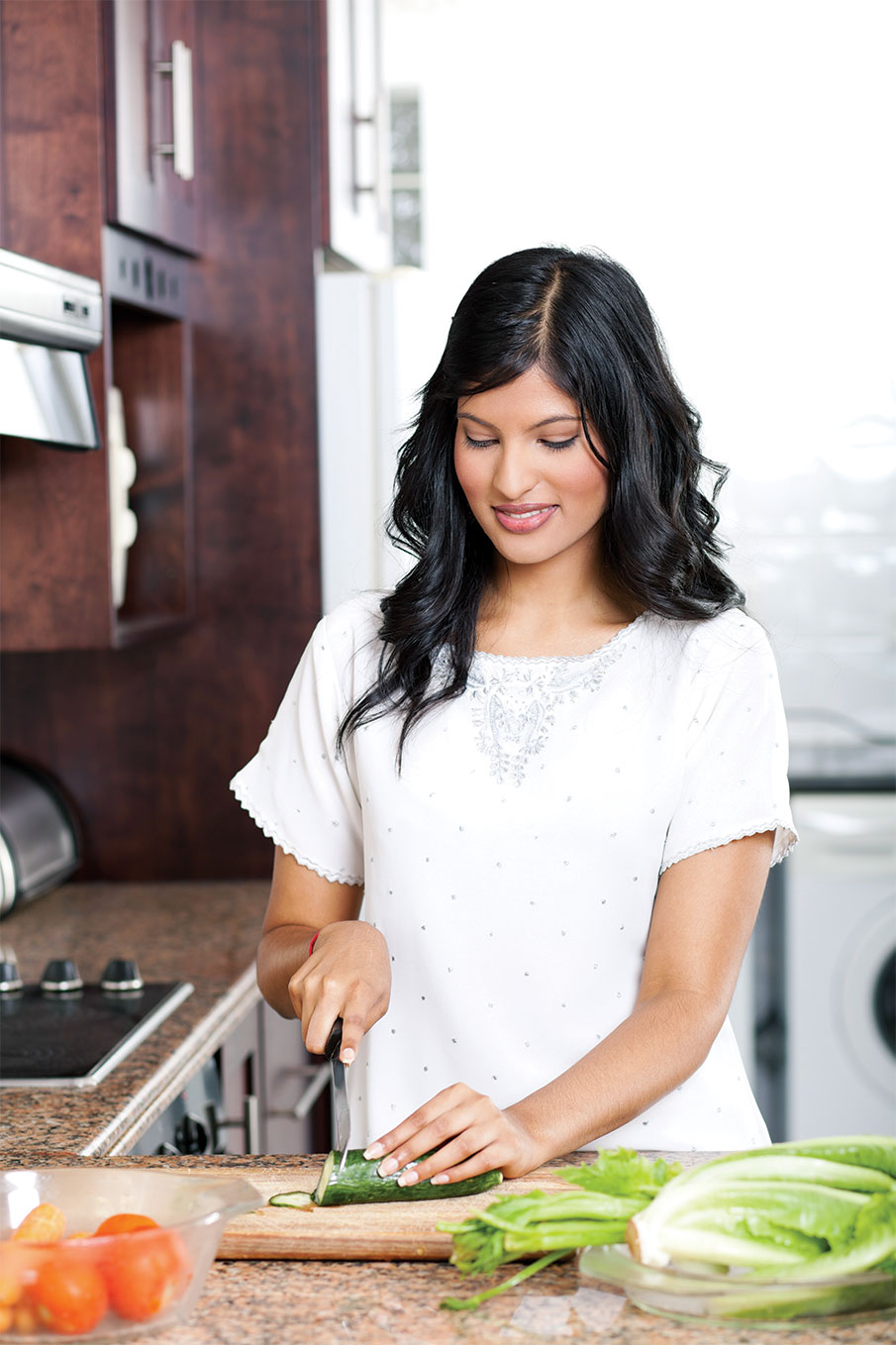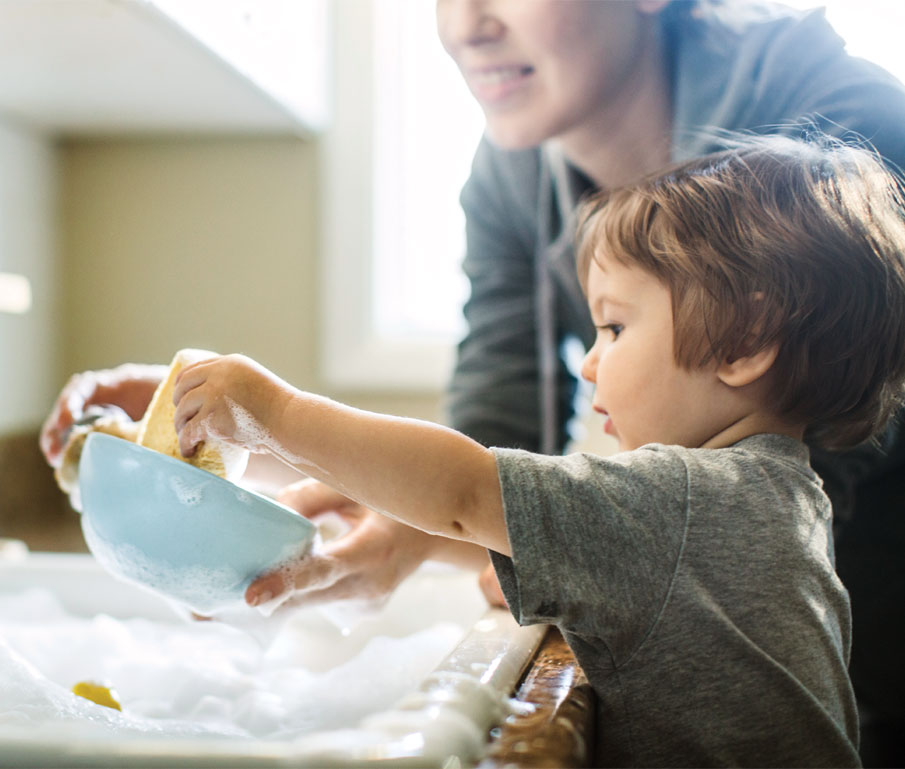
Planifica Para Estar Saludable Y Sin Estrés
- Home
- Live Well Blog
- Planifica Para Estar Saludable Y Sin Estrés
SHERRY COLEMAN COLLINS, MS, RDN, LD
Son las 6:28 p. m., el teléfono suena, tienes que doblar la ropa limpia y los niños todavía necesitan un baño … entonces lo oyes: «Mamá, ¿qué hay para cenar?». Esta pregunta puede encloquecer a los padres. Por suerte para ti, ya lo has planeado con anticipación y con orgullo respondes: «pollo a la parrilla con arroz integral, brócoli al vapor y yogur con granola, fruta fresca y miel». ¿Verdad? Bueno, tal vez no.
Tal vez estás pensando, ¿quién tiene tiempo para planear comidas de este tipo? Bueno, si tienes 15 minutos, tienes tiempo.
Planificar las comidas con anticipación puede ayudar a los padres a ahorrar tiempo, dinero y evitar el estrés que te puede causar el: «¡Tengo hambre!». Tomarse unos minutos para planificar con anticipación también puede ayudar a tu familia a comer más sano y pasar más tiempo juntos.
He aquí cómo PLANIFICAR comidas saludables y sin estrés:

Elige tus comidas.
- Una vez por semana, tómate 15 minutos para planear tus comidas para los próximos 7 días.
- Piensa en los horarios de tu familia durante la semana para que te ayude a elegir las comidas que comerán juntos en familia y las que son rápidas y fáciles de llevar para continuar con las actividades en los días más ocupados.
- Puede ser útil tener a mano una lista con las recetas favoritas de tu familia al momento de decidir las comidas para la semana. Tener una lista con recetas puede ayudar a tu familia a comer una variedad de comidas saludables y evitar comer lo mismo una y otra vez.
- A los niños les encanta ayudar. Pide a tus hijos que elijan una comida que les gustaría comer durante la semana. Ventaja: los niños son más propensos a probar algo nuevo si están involucrados en la toma de decisiones.
- No te olvides de las sobras. El pollo a la parrilla que sobró de la cena del lunes puede servir para hacer tacos para el almuerzo del martes. Sacar el máximo provecho de las sobras te ayudará a cocinar menos y a desperdiciar menos también.
- Al planificar tus comidas, trata de incluir alimentos de cada grupo: granos enteros, frutas, verduras, proteínas magras y lácteos bajos en grasa.
Haz una lista de lo que necesitarás.
- Una vez que hayas planificado tus comidas, arma una lista con los ingredientes que necesitas comprar para la semana.
- Organiza tu lista basada en la manera en la que están expuestos los productos en tu tienda de abarrotes. ¿Qué ves apenas entras en la tienda? Si son productos agrícolas, entonces debes colocar las frutas y verduras en la parte superior de tu lista. Organizar tu lista de esta manera te puede ayudar a evitar el olvido de elementos que necesitas o tener que atravesar corriendo la tienda a último momento para buscar algo en un lugar por donde ya pasaste.
- Revisa tu despensa, congelador y refrigerador para ver lo que ya tienes y así evitar comprar cosas que no necesitas.
Acuerda un momento y un lugar.
- A veces los horarios ocupados pueden hacer que compartir comidas juntos en familia sea un desafío. Sin embargo, cuando has planificado tus comidas con anticipación, puede ser más fácil para toda la familia comer juntos.
- Establece un horario semanal para las comidas familiares. Cuelga una lista, o escribe en el calendario de la familia qué comidas van a compartir, dónde y cuándo. Saber qué día y a qué hora se espera que todos estén en la mesa para cenar puede ayudar a que todos planifiquen con anticipación.
- Y recuerda, las comidas en familia se pueden disfrutar juntos en cualquier momento del día: desayuno, comida o cena.

Nunca hagas tus compras con hambre.
- Antes de ir de compras, come un tentempié. De esta manera tendrás menos posibilidades de comprar artículos que no están en tu lista.
- Cuando estés lista para ir a la tienda, ¡no te olvides de llevar tu lista! Si las listas de papel siempre se te pierden o se te olvidan, intenta descargar una aplicación gratuita de "notas" o "lista de compras" desde tu teléfono inteligente, o toma una foto de la lista de compras con el teléfono.
La oferta de comida real

- Se realista. Puede que no seas capaz de planificar anticipadamente cada comida, y eso está bien. No seas tan dura contigo misma. Planea con anticipación las comidas que puedas.
- Hazlo sencillo. La cena no tiene que ser una sofisticada comida de siete tiempos.
- Considera la cocción por tandas. Duplica la receta de las sopas o guisados, congela la mitad y luego solo descongela, calienta y sirve.
- Ten un plan de respaldo. Seamos sinceros, a veces simplemente nos quedamos sin tiempo o la nueva receta que probamos resulta, bueno … terrible. Si terminas quemando la lasaña, o te das cuenta de que el asado va a tomar demasiado tiempo para prepararse, ten algo más a mano para reemplazar rápidamente. El atún en conserva o el pollo y el arroz o la pasta son grandes refuerzos que encontramos en nuestra despensa.


- ¡Nocedas a las picadas entre comidas! Si tus hijos no quieren comer algo que les has ofrecido, está bien; recuérdales amablemente que esto es lo que hay para comer en este momento y si no lo quieren comer no hay problema. Si tus hijos exigen ciertas comidas o tentempiés entre las comidas, solo explícales que no es hora de comer en ese momento y diles cuándo pueden esperar su próxima comida o tentempié.
- Pide ayuda durante las comidas. Los niños pueden ayudar con cosas como poner la mesa, lavar los platos y limpiar las migajas.

"Juntos en la mesa"
Como padres, hacemos todo lo posible para mantener a nuestros niños seguros, felices y sanos. Cuando se trata de ofrecer comidas y tentempiés saludables, no se trata solo de los alimentos que ofrecemos, sino del tiempo que nuestra familia pasa junta, que es lo importante. Las comidas familiares juegan un papel importante en la salud de los niños y son un buen momento para el aprendizaje y la unión familiar. Compartir las comidas juntos en la mesa ofrece un tiempo para que las familias se relajen, rían y hablen acerca de cómo fue su día.
Haz un esfuerzo para comer en familia … y diviértete cuando lo hagas.
Si pudieras tener un superpoder ¿cuál sería?
Las familias comen mejor juntas.